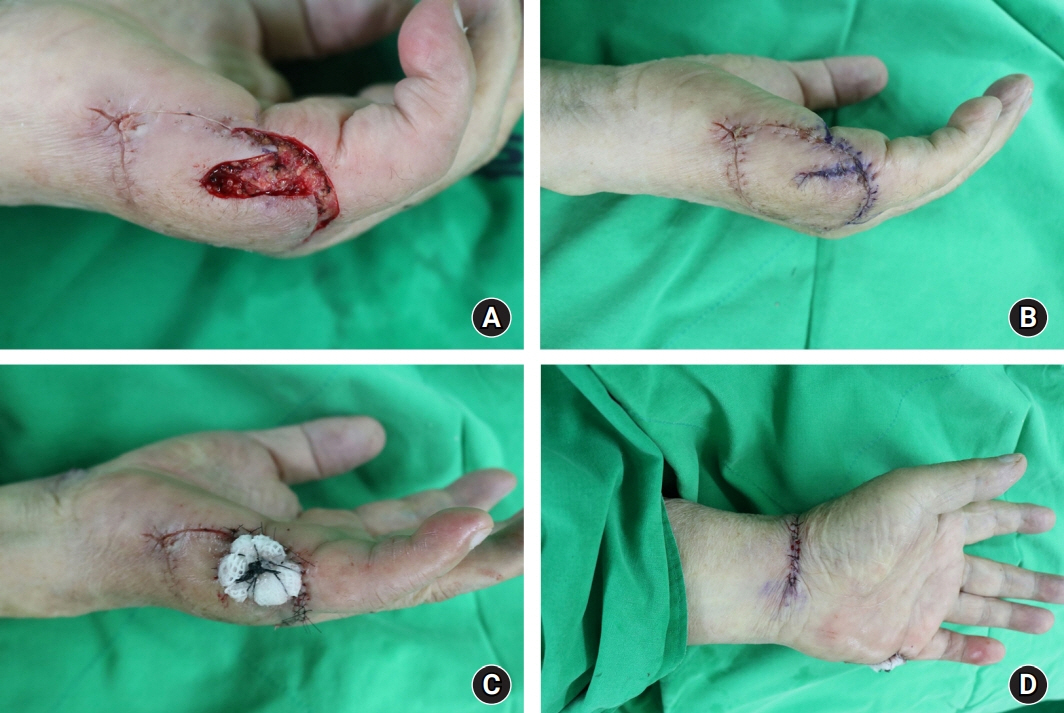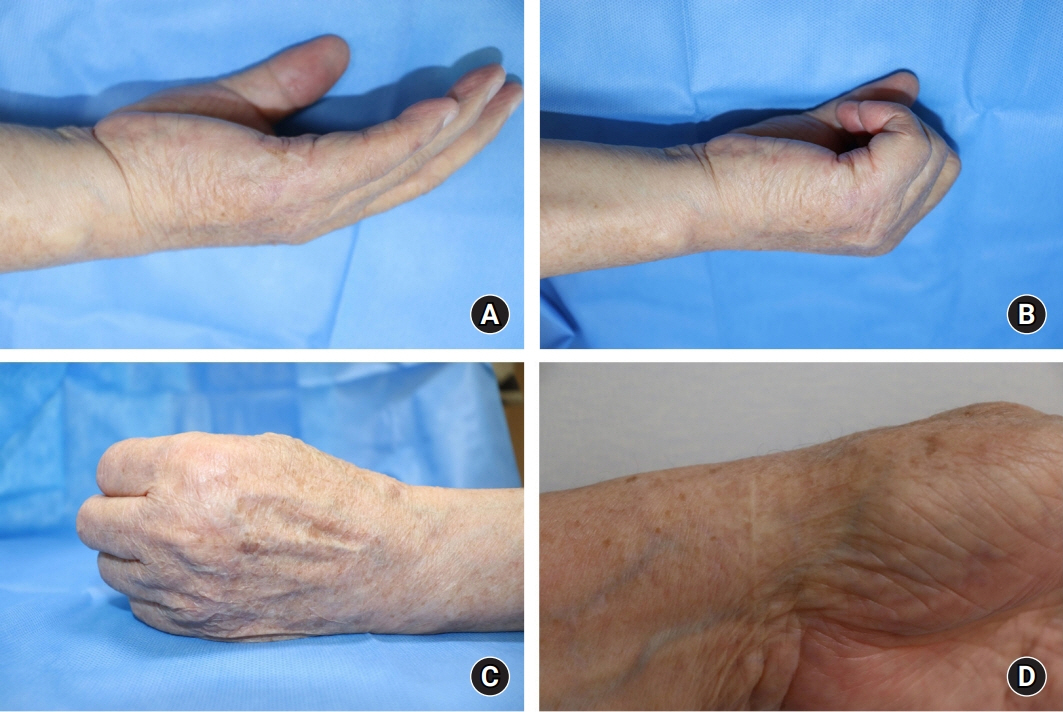Arch Hand Microsurg.
2022 Sep;27(3):217-221. 10.12790/ahm.22.0004.
Keystone flap for reconstruction of ulnar side defect of the hand: a case report
- Affiliations
-
- 1Department of Plastic and Reconstructive Surgery, Myunggok Medical Research Institute, Konyang University Hospital, College of Medicine, Konyang University, Daejeon, Korea
- KMID: 2532737
- DOI: http://doi.org/10.12790/ahm.22.0004
Abstract
- Soft tissue defects of the hand may present in various forms and are often challenging to treat. The goal of surgical hand reconstruction includes both functional and aesthetic aspects. The keystone-design perforator island flap is a multi-perforator advancement flap with a safe flap harvesting technique, reliable blood supply, minimal donor site morbidity, and a simple dissection process that obviates the need for microsurgical techniques. Our patient was an 85-year-old man with squamous cell carcinoma on the left-hand ulnar side. The patient had difficulty in ambulation and used the affected area of the hand to stand up. Thus, we planned reconstruction using an omega-variant type B keystone flap to further reduce tension during flap insetting and to provide sufficient padding that would protect against excessive pressure postoperatively. The flap and donor site were closed primarily, without any postoperative complications. The patient was satisfied with the outcome after 19-month follow-up.
Figure
Reference
-
References
1. Behan FC. The keystone design perforator island flap in reconstructive surgery. ANZ J Surg. 2003; 73:112–20.2. Srivastav S, Gupta S, Sharma A. Keystone flap as a reconstructive option for selected areas; a prospective study. J Clin Orthop Trauma. 2020; 11(Suppl 5):S871–5.3. Huang J, Kim CW, Wang X, et al. Successful application of modified keystone flaps following skin tumor ablation. Medicine (Baltimore). 2019; 98:e17469.4. Das De S, Sebastin SJ. Considerations in flap selection for soft tissue defects of the hand. Clin Plast Surg. 2019; 46:393–406.5. Yoon CS, Kong YT, Lim SY, Kim J, Shin HW, Kim KN. A comparative study for tension-reducing effect of Type I and Type II keystone perforator island flap in the human back. Sci Rep. 2021; 11:16699.6. Lim SY, Yoon CS, Lee HG, Kim KN. Keystone design perforator island flap in facial defect reconstruction. World J Clin Cases. 2020; 8):1832–47.7. Lee HG, Lim SY, Kim YK, Yoon CS, Kim KN. Keystone design perforator island flaps for coverage of non-oncological periarticular defects surrounded by the zone of injury. J Int Med Res. 2020; 48:0300060520930152.8. Behan FC, Rozen WM, Lo CH, Findlay M. The omega - Ω - variant designs (types A and B) of the keystone perforator island flap. ANZ J Surg. 2011; 81:650–2.
- Full Text Links
- Actions
-
Cited
- CITED
-
- Close
- Share
- Similar articles
-
- Reconstruction of Hand and Forearm Injury using Reverse Ulnar Artery Forearm Flap: Six Cases Report
- Fasciocutaneous Propeller Flap Based on Perforating Branch of Ulnar Artery for Soft Tissue Reconstruction of the Hand and Wrist
- Distally based Ulnar Artery Flap for Reconstruction of Hands
- Two Cases of Reconstruction with Modified Keystone Flap on the Lower Extremity
- Usefulness of the lateral arm free flap for hand defect reconstruction




